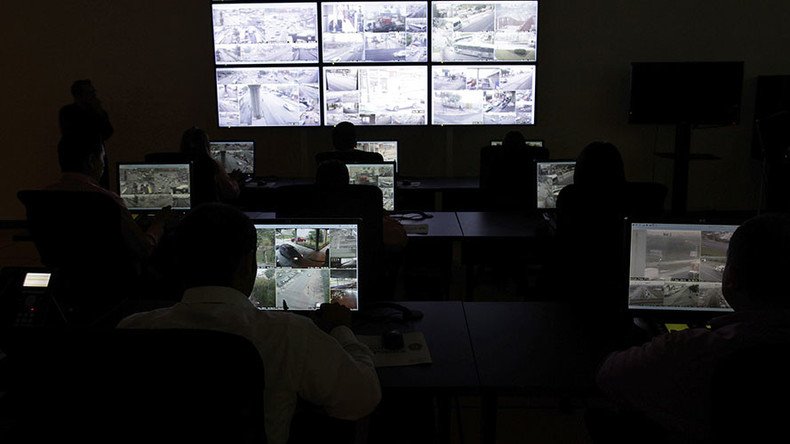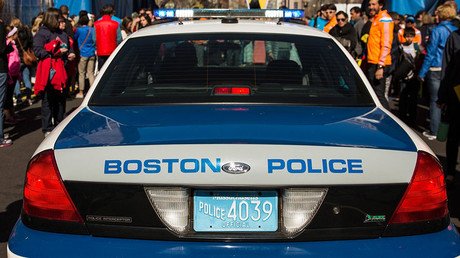Police Stingrays unfairly impact low-income, black neighborhoods — report

The use of Stingray devices has been controversial. The surveillance tool can be used to locate cell phones by mimicking phone towers, but their practical use shows severe racial disparities in multiple cities across the country, according to a new report.
Police departments in Milwaukee, Baltimore and Tallahassee have all been found to use Stingray tracking devices without warrants and particularly in low-income, minority neighborhoods, according to City Labs. The Stingray devices are often used in theft and robberies, while logistical issues surrounding these tools have some civil rights activists concerned.
The issues presented are twofold. First, a recent study of Stingray use found three large cities across the country used the devices to target areas in low-income neighborhoods with high minority populations. The other problem is that Stingrays are not used to find one single phone. While they may be used with the intention of finding a specific person, they collect location information from many phones within the area they’re used.
Milwaukee, Baltimore and Tallahassee are in three very different parts of the country, but all show interesting demographics. The median household income in all three cities is below the national average of $51,939 with Milwaukee's $35,489, Tallahassee's $39,407 and Baltimore's $41,819, according to the US Census.
In addition, Baltimore is the only city with a majority African American population while they represent only 40 percent of Milwaukee's population and 35 percent of Tallahassee's.
Despite African Americans being the minority in two of the cities, police were found to use Stingrays disproportionately in specific communities. For example, 78 percent of trackable Stingray uses from 2007-14 were found to be in Census blocks where the median household income was lower than the city average, according to City Lab.
In addition, Tallahassee police were found to use the surveillance devices in predominantly non-white neighborhoods 53 percent of the time, despite those communities only representing 35 percent of the population.
In Milwaukee, Stingrays were used in areas with lower white populations regardless of income.
However, the city’s wealthiest and whitest populations saw only a few uses of Stingrays.
While Baltimore is a city with a black majority population of 63.7 percent, black communities were the target of Stingray operations 90 percent of the time. The issue is particularly pronounced in Baltimore where neighborhoods can be racially segregated but have similar incomes and crime levels.
City Lab found that the historically white working-class neighborhoods on the northeast side of Druid Hill are similar in terms of finances and crime to the predominantly neighboring black neighborhoods of Hampden-Woodberry and Reservoir Hill. However, the use of Stingrays was significantly higher in the Hampden-Woodberry and Reservoir Hill neighborhoods.
Some may defend the use of Stingrays by arguing that it is merely a tool to stop criminals and that many cities, such as Milwaukee, require a warrant for Stingray searches. In a perfect world, that would be true. But in reality, privacy and civil rights organizations have found police using Stingrays to gather information without using warrants due to a loophole from the device’s history.
The tool was initially developed for national security, but has since fallen into the hands of local police who use it on the condition that they will not acknowledge their use, the Milwaukee-Wisconsin Journal Sentinel reported.
One case in Milwaukee became a prime example of one of the many problems with Stingray use. Damian Patrick, 27, was arrested in 2013 after police discovered a pistol in his vehicle. Police originally claimed that they knew where to find Patrick thanks to an “unknown source,” but it turned out that police had tracked his cellphone location with his service provider and a Stingray.
Police had received a warrant for Sprint to locate Patrick’s area, but a Stingray is what turns the vague location from a cellphone provider into a specific location that is easily pinpointed.
This is far from the only ethical quandary when it comes to Stingrays. The other issue is that because the device mimics cell phone towers, it allows police to receive a vast array of information from as many as 10,000 people at once, according to the Electronic Frontier Foundation.
Even Gamma Group, a Stingray manufacturer, has acknowledged this issue. In their brochure, they wrote: “Operating [a Stingray] within busy or crowded areas will result in many thousands of identities being acquired, most of whom will not be of interest or unwanted collateral.”
This makes the Stingray a device that can tell authorities where up to 10,000 people are at one time in a nearby area, but what happens to all of that “unwanted collateral?”
Well, that’s a good question that no one can really answer. Some are concerned that the information could be stored to track “pre-suspects” in high crime areas.
“If you are in a certain neighborhood, you are going to encounter law enforcement a lot,” Matt Mitchell, a security researcher with the racial justice organization CryptoHarlem, told City Lab. “So because of that, there are patterns that could be made between people and suspects who are not connected in any way. It’s making criminality viral.”















